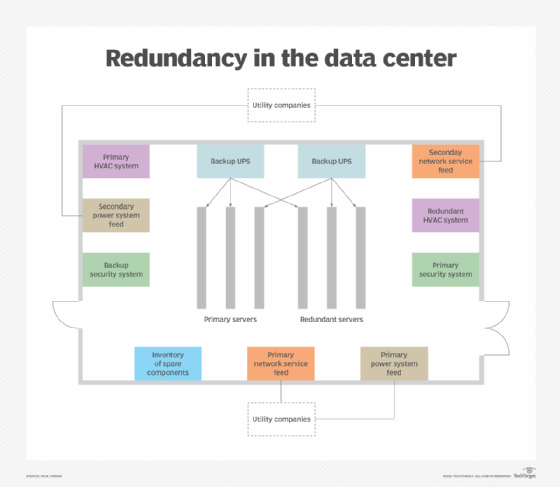Your Rights to Redundancy If Company Goes Bust: UK Employee Protections
Exploring the Operational Characteristics of Firm Redundancy and Its Long-Term Sustainability

Redundancy Methods for Company Connection
In order to guarantee nonstop operations, companies must execute efficient redundancy approaches for business continuity. Redundancy in this context describes the replication of critical components or functions within a system to alleviate the influence of potential failures. By integrating redundancy methods, companies can boost their strength against disruptions caused by different aspects such as all-natural calamities, tools failings, or cyber-attacks.
One usual redundancy approach is the execution of back-up systems and information storage space solutions. This includes creating matches of important data and systems that can be triggered in situation of a main system failure. Furthermore, organizations can establish redundant communication channels and source of power to maintain connection and procedures throughout unforeseen events.
Moreover, cross-training employees to perform numerous duties within the business can act as an important redundancy method. This guarantees that vital tasks can still be carried out also if vital workers are not available due to illness or various other factors. Generally, effective redundancy approaches are crucial for services to support functional continuity and minimize the influence of prospective disruptions.
Effect of Redundancy on Organizational Strength
Given the critical function redundancy techniques play in making certain service continuity, discovering the effect of redundancy on organizational durability becomes essential for recognizing the holistic functional dynamics of a business. Business resilience refers to an entity's ability to adjust to interruptions, recuperate from obstacles, and transform when needed while maintaining core features. Redundancy, when strategically applied, can significantly contribute to boosting an organization's resilience when faced with unanticipated difficulties. By having back-up systems, personnel, or procedures in position, companies can better withstand shocks and proceed operations with very little interruption.
Moreover, redundancy can reinforce staff member spirits and self-confidence, recognizing that there are backup strategies in place to deal with unexpected situations. This sense of protection can bring about increased productivity and an extra favorable workplace. Additionally, redundancy can cultivate technology and creative thinking within a company as staff members feel equipped to take computed dangers, use this link recognizing that this contact form there is a safeguard to sustain them in situation of failure. Overall, the effect of redundancy on organizational resilience is extensive, forming the long-term sustainability and success of a company.
Balancing Performance and Versatility in Redundancy
Achieving a harmonious balance in between functional efficiency and flexible flexibility is an essential obstacle in the critical deployment of redundancy within companies. Too much versatility without a strong functional structure can result in ineffectiveness and disparity.
To balance effectiveness and flexibility in redundancy preparation, companies need to very carefully analyze their functional demands, market dynamics, and critical objectives. Applying lean techniques can boost efficiency by improving processes and getting rid of waste, while fostering a culture of adaptability and continuous enhancement can enhance adaptability. In addition, buying cross-training programs and durable communication channels can aid grow a flexible workforce with the ability of taking care of varied jobs during periods of shift. Inevitably, discovering the best equilibrium in between effectiveness and versatility is vital for developing a sustainable and resistant organization despite uncertainty.
Long-Term Sustainability With Redundancy Preparation
To ensure enduring feasibility and security, companies must strategically align their redundancy planning with long-lasting sustainability objectives, therefore integrating functional efficiency with adaptive flexibility. Companies ought to see redundancy not as a reactive option to instant issues however as a positive method for long-lasting success.

Proactive Procedures for Lasting Company Workflow
How can companies proactively boost their functional sustainability for long-lasting success? Carrying out positive steps is vital for companies aiming to make certain lasting operations.
Moreover, fostering a culture of continual enhancement and knowing within the organization can boost flexibility to altering market conditions and consumer needs. Encouraging staff member participation in decision-making processes and providing possibilities for expert development can improve morale, performance, and general performance. Developing clear goals, monitoring vital performance signs, and on a regular basis examining progress are crucial elements of aggressive sustainability administration.
Collaborating with distributors, customers, and various other stakeholders to promote lasting practices throughout the supply chain can develop a ripple result of positive effect check my blog - redundancy pay if company goes bust. By taking proactive steps in the direction of operational sustainability, firms can build durability, drive innovation, and protect their long-term success in an ever-evolving organization landscape
Final Thought

In the realm of organizational administration, the tactical deployment of business redundancy stands as a critical yet detailed method that demands a delicate equilibrium between functional efficiency and lasting viability. By studying the operational dynamics that underpin firm redundancy and assessing its more comprehensive ramifications for business resilience and versatility, a nuanced understanding of how redundancy methods can form the future trajectory of a company starts to unravel.Given the important role redundancy methods play in ensuring company connection, discovering the impact of redundancy on business strength becomes crucial for understanding the all natural operational dynamics of a business. On the whole, the impact of redundancy on organizational durability is extensive, forming the lasting sustainability and success of a company.
In conclusion, comprehending the operational characteristics of firm redundancy is crucial for guaranteeing long-lasting sustainability.